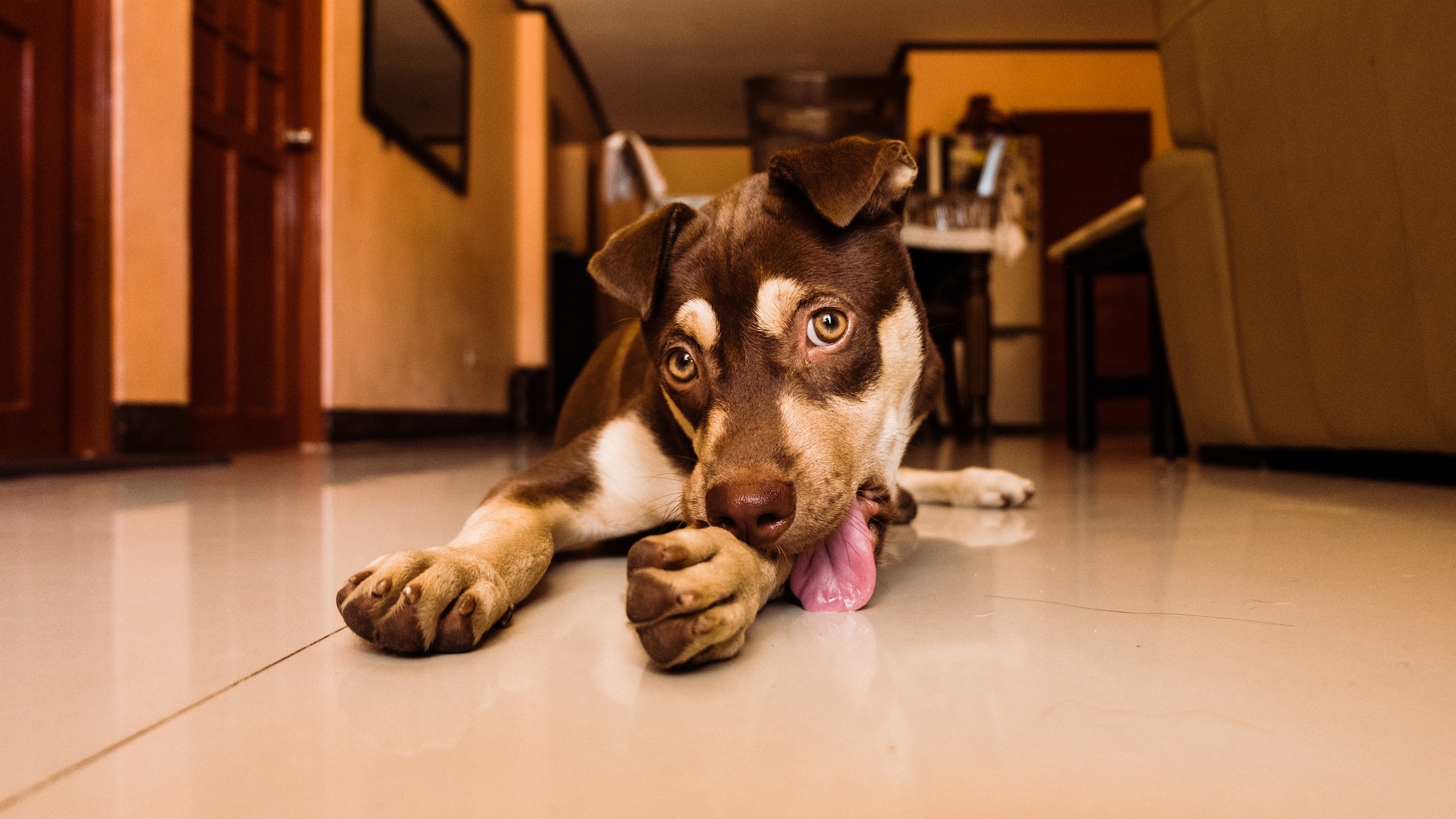Although humans and dogs have enjoyed a symbiotic relationship for thousands of years, we still don’t always understand each other. For instance, your pup probably can’t figure out why you fail to thoroughly gnaw the bones from your steak or why you get so upset when he rolls in unspeakable substances in the yard. By the same token, you may be puzzled by some of your canine’s actions. Licking of wounds is a case in point. Why does your pooch do it? Is it a good idea in all cases? And while we’re at it, what is the best way to treat a dog’s wound?
The Go-To Solution
Above all else, dogs are creatures of instinct. When they get hurt, their first impulse is to treat the situation in the only way they have at their disposal: with their tongue. At the most basic level, licking a wound serves to remove dirt or other debris, but is there more involved?
The Benefits of Canine Saliva
The liquid in a dog’s mouth is made up of more than just water. In fact, it also contains mild antimicrobial and antibacterial properties that are known to kill Escherichia coli and Streptococcus. Even so, it does not possess miraculous healing properties. If an injury is serious, additional antiseptic measures may be necessary to prevent infection and promote recovery.
The Downsides of Prolonged Licking
Yes, your dog’s immediate, instinctual response to an injury can be an effective way to clean the area. However, veterinary professionals agree that prolonged licking of the injured region can have serious negative consequences. For one thing, it often quickly turns into an obsessive, repetitive habit that can interfere with healing. The friction of constant licking is often also combined with chewing on and around the affected area, behavior that can lead to additional harm.
What to Do in Case of Injury
If your fur baby gets hurt, keep the following recommendations in mind:
- If the wound is deep or bleeds profusely, call your veterinarian right away. They will probably recommend that you come in.
- If cuts or abrasions are minor, wash the area immediately. Ask your vet if you can treat the wound with an antibacterial ointment to speed up the healing process.
- Monitor your dog’s overall health and behavior over the next few days, and contact your vet if you have any concerns. Potential red flags include marked changes in diet (not eating or drinking as normal) and severe lethargy.
Should you notice that your pup is licking the area, there are a few things you can do:
- One commonly employed solution is the Elizabethan or cone collar. This collar, usually made from hard plastic or foam, limits your dog’s ability to access the wound site.
- Recovery shirt. This is particularly useful if your dog has had surgery on their torso. The shirt shields the affected area from your dog’s licking and chewing while simultaneously keeping the area clean and dry.
- Liquid bandage spray. Particularly beneficial for small cuts, this often bitter-tasting spray discourages chewing and licking while simultaneously soothing and protecting minor wounds.
- Paw bandages. These self-adhesive plasters are great if your pup has a booboo on one of his tootsies. Since your dog will be going outside several times a day and may get exposed to additional dirt and germs while relieving himself, these breathable strips act as an effective extra layer of protection.
When a Hot Spot Develops
In spite of your best efforts, your dog’s excessive licking, chewing or scratching may lead to a red, inflamed skin lesion known as a hot spot. Although these can appear anywhere on the dog’s body, they are most commonly seen on the head, hips or legs. These oozing sores can be smelly, may contain pus and can quickly and dramatically increase in size.
Treating the hot spot is essential; without intervention, your pup will just continue to lick, scratch and chew the area, causing the spot to grow and potentially leading to a deep skin infection. In addition to the anti-lick remedies we spoke about above, you can address hot spots in a few ways:
- Cover the affected area with a sock or bandage.
- Ask your vet to prescribe topical or oral steroids like prednisone as well as an antihistamine such as Benadryl.
- Work with your vet to figure out the underlying cause that led to the hot spot. It may, for instance, have resulted from un-expressed anal glands, a flea or food allergy, arthritis, ear infection or even poor grooming on your part.
- Clip hair or fur away from the affected area to promote healing and drying of the lesion.
Any loving pet parent knows that one of the best ways to prevent or treat negative situations or behaviors is to remain watchful. Your pup does so much for you every day that returning the favor with a bit of monitoring is probably a pleasure. Although you and your fur baby may never totally understand each other, providing this supervision is a great way to keep the occasional lick or chew from degrading into a serious medical condition.

